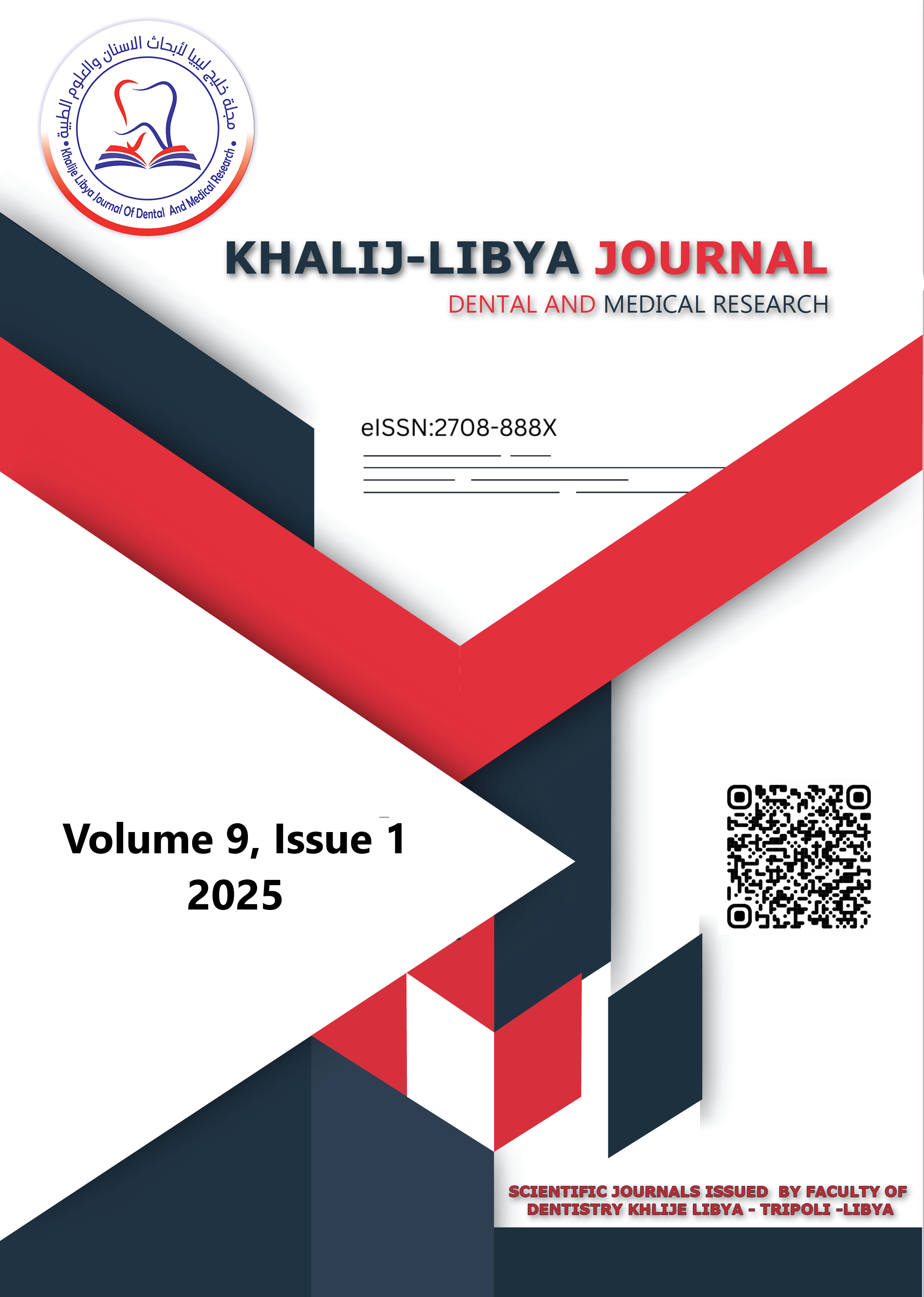Urinary Tract Infections in Elderly Patients in Tripoli, Libya: A Study on Bacterial Isolation and Antimicrobial Susceptibility
DOI:
https://doi.org/10.47705/kjdmr.25911022Keywords:
UTI, Antibiotic Resistance, Sensitivity Antibiotics, Uropathogenic E. ColiAbstract
Urinary tract infections (UTIs) are considered the most widespread bacterial infections and among the most common nosocomial infections, second only to lower respiratory tract infections. The risk of developing a UTI increases with age, making UTIs among the most commonly diagnosed infections in elderly people, representing a significant public health problem. This study aimed to isolate and detect the microbial responsible for urinary tract infections in elderly individuals and determine their resistance patterns and sensitivity to antibiotics among Libyan patients in Tripoli city. The study was conducted simultaneously in Alsharik, Eltafoq, and Ibn Al Nafis laboratories in Tripoli, Libya, during July and August 2024. One hundred and one urine samples were collected from elderly participants suffering from UTI symptoms (38 males and 63 females), with ages ranging from 60 to 97 years. Isolation, biochemical identification, and antibiotic susceptibility analyses were performed. Thirteen antibiotics were tested in this study. Among the 101 isolated samples from elderly patients with suspected UTI, females had a higher prevalence of bacterial infections (62.4%) compared to males (37.6%). The highest number of infections was in the 60–69 years age group (45.4%). Gram-negative organisms accounted for 91.1% of isolates compared to Gram-positive organisms. Escherichia coli was the most common organism isolated (43.6%), followed by Klebsiella pneumoniae (29.7%). Most isolates were resistant to Ampicillin (31.7%) and Amoxicillin (23.8%), followed by Tetracycline (10.9%). The Gram-positive organisms Streptococcus pneumoniae, Enterobacter spp., and Staphylococcus aureus were most susceptible to Amoxicillin, Amikacin, and Meropenem, with sensitivity rates of 75%, 66.7%, and 50%, respectively. E. coli was more susceptible to Imipenem (25%), Amikacin (22.7%), and Nitrofurantoin (13.6%), whereas Amoxicillin and Sulfamethoxazole/Trimethoprim showed lower efficacy. Gram-negative bacteria were the main cause of UTIs in the study population, mainly belonging to the E. coli and Klebsiella families. Age and gender were significant factors in determining UTI etiology, and considering these factors can improve the accuracy in identifying causative uropathogens and guide empirical treatment.
Downloads
Published
How to Cite
Issue
Section
License
Copyright (c) 2025 Khalij-Libya Journal of Dental and Medical Research

This work is licensed under a Creative Commons Attribution-NonCommercial 4.0 International License.
All the articles published in KJDMR are distributed under CC BY-NC-SA 3.0 IGO license










